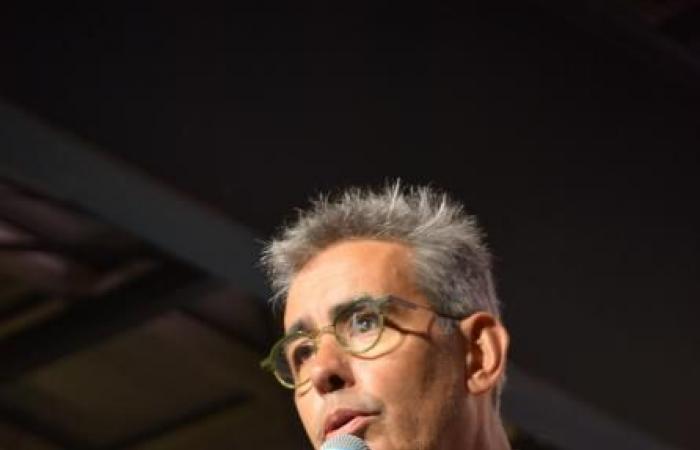Every two yearsHorsch organizes its Lucine days, two days of reflection and meetings around various issues affecting the agricultural world. This year, the speakers invited to the site of the French subsidiary, in Haute-Marne, were particularly interested in energy, in all its forms. The opportunity for Benjamin Louvet, asset manager at the French investment company Ofi Invest AM and specialist in raw materials, to address the question of oil, from its availability to the setting of its price.
Balancing supply and demand
Needless to say, oil is a non-renewable fossil energy. Its stocks are therefore not infinite. The same goes for other fossil fuels such as coal and gas which we are trying, little by little, to replace with wind, photovoltaic solar, hydroelectric energy, etc. Despite this beginning of transition, fossil fuels still represent , at present, 83% of primary energies used on earth, which is barely less than in the 1970s (86%). “The oil market is only growing,” confirms Mr. Louvet.
Oil consumption currently exceeds 100 million barrels per day, in a market structured by three major players: the United States, Russia and Saudi Arabia. All three together produce 35 million barrels per day, or a third of global demand.
“If consumption is increasing, we must not forget that the production of conventional oil (read framed) declines by 4% each year. According to the International Energy Agency, peak production of conventional oil was reached in 2008. The losses were made up thanks to the extraction of shale oil, which made the United States the world’s leading oil producer. » However, according to certain university studies, peak production of this unconventional hydrocarbon could be reached soon, as early as 2027 or 2028.
In this context, only one solution is required: balancing supply and demand. “To do this we must increase prices, which will automatically lead to a drop in demand, or work to increase supply, while we ask the oil industries to invest less in order to preserve our planet. »
Three actors with different behaviors
Faced with this situation, the three heavyweights mentioned above do not adopt the same behavior.
Saudi Arabia, the world’s third largest producer, is characterized by oil production managed by a national state company and very low production costs. It is also part of the powerful Organization of the Petroleum Exporting Countries (OPEC). “The OPEC countries hold the oil market in their hands. They are able to change production according to the economic conditions encountered, whether upwards or downwards, which allows them to influence prices. »
During the Covid-19 pandemic, for example, they reduced their production in order to maintain prices and their investments. “This shows that OPEC is making adjustments in order to maintain a certain balance in prices and, thus, their interests in the medium term. »
In the United States, on the other hand, private companies exploit the deposits. With one objective: to maximize their profits, which leads them to produce to the maximum of their capacities. “The USA is approaching a moment of truth, which will result from the realization that oil is a limited resource,” believes Benjamin Louvet. With a major drawback: prices will irremediably increase. “But with the advantage that it will accelerate the energy transition. »
What about Russia then? According to the expert, we cannot do without 10% of world oil, although it is unavoidable… Following the invasion of Ukraine, the European Union took a series of sanctions and no longer buys oil. Russian oil. Which led to a game of musical chairs. “China has turned more towards Russia and abandoned Saudi Arabia which, on the contrarysells more than previously to Europe. This adjustment made it possible to avoid a meteoric rise in prices. »
In the next 12 to 18 months, the price of oil is expected to remain stable. However, we must get used to the fact that it remains high and will increase in the years to come before, probably, falling very sharply at a time when we will use it much less for the uses we currently have.
From one addiction to another?
At the same time, we cannot deny that climate change is a reality, is linked to human activities and results from the use of fossil fuels. Faced with this situation, what are the energy solutions?
Hydroelectric power stations (dams) constitute a first avenue. “However, all available potential has already been exploited. If this mode of production progresses, it will only be by a few percent,” says Benjamin Louvet. As for nuclear power, it cannot develop everywhere and will probably represent no more than 15% of the energy mix.
That leaves photovoltaic solar and wind power. “Most of the energy transition is based on these two modes of production which also use two free sources of energy: the sun and the wind. However, we need “transformers” to produce electricity. These are photovoltaic panels and wind turbines. » Which raises a problem: both require, among other things, critical metals for which there is no possible substitution in the short term and whose supply is limited.
Would we therefore move from one dependence to another? The expert wants to be reassuring: “The stocks on Earth seem sufficient. The problem therefore does not lie at this level, but lies in our ability to extract and make these metals available. And that’s where the problem lies. Therefore, their price is expected to increase. “The energy transition promises to be long and costly. We will have to get used to living with expensive energy for the next 10 to 20 years. »
The future should be more sustainable. These metals, unlike oil, are in fact recyclable and can be recovered during the dismantling of wind turbines and photovoltaic panels. Which will reduce our dependence on mining.
Opportunities for farmers?
According to Benjamin Louvet, farmers can benefit from a situation in which the price of energy remains high for 15 to 20 years. How ? By focusing more on self-production of electricity. Wind power or photovoltaics are elements that farmers must think about, especially since the price of panels is decreasing as China overproduces. “Producing your own electricity is not selfish. On the contrary, it helps reduce the pressure on the network and relieves all citizens,” he adds.
And to conclude: “We cannot move from fossil energy to renewable energy without there being a cost. You have to get used to it, before prices perhaps go down again, but also learn to save energy.”
Jérémy Vandegoor







